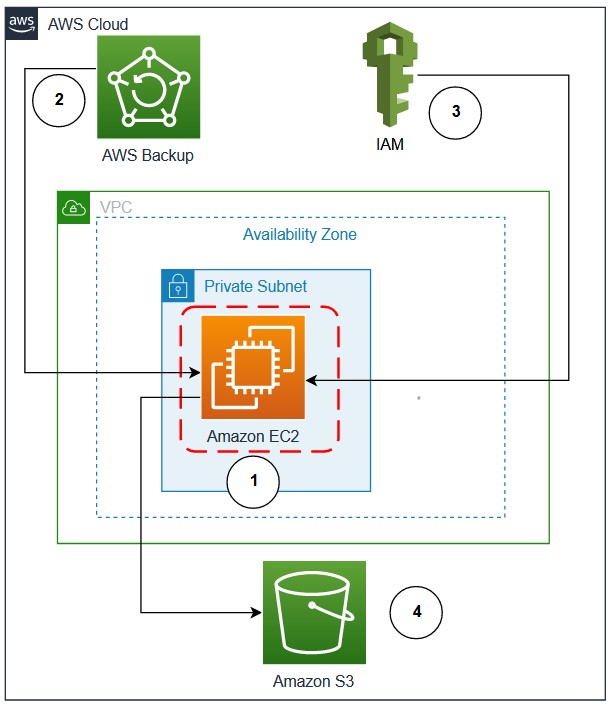AWS Architecture Blog
Category: Compute
Coordinating large messages across accounts and Regions with Amazon SNS and SQS
Many organizations have applications distributed across various business units. Teams in these business units may develop their applications independent of each other to serve their individual business needs. Applications can reside in a single Amazon Web Services (AWS) account or be distributed across multiple accounts. Applications may be deployed to a single AWS Region or […]
Web application access control patterns using AWS services
The web application client-server pattern is widely adopted. The access control allows only authorized clients to access the backend server resources by authenticating the client and providing granular-level access based on who the client is. This post focuses on three solution architecture patterns that prevent unauthorized clients from gaining access to web application backend servers. […]
How to track AWS account metadata within your AWS Organizations
United Services Automobile Association (USAA) is a San Antonio-based insurance, financial services, banking, and FinTech company supporting millions of military members and their families. USAA has partnered with Amazon Web Services (AWS) to digitally transform and build multiple USAA solutions that help keep members safe and save members’ money and time. Why build an AWS […]
Implementing the AWS Well-Architected Custom Lens lifecycle in your organization
In this blog post, we present a lifecycle that helps you build, validate, and improve your own AWS Well-Architected Custom Lens, in order to roll it out across your whole organization. The AWS Well-Architected Custom Lens is a new feature of the AWS Well-Architected Tool that lets you bring your own best practices to complement the existing […]
Using AWS Backup and Oracle RMAN for backup/restore of Oracle databases on Amazon EC2: Part 2
Customers running Oracle databases on Amazon Elastic Compute Cloud (Amazon EC2) often take database and schema backups using Oracle native tools like Data Pump and Recovery Manager (RMAN) to satisfy data protection, disaster recovery (DR), and compliance requirements. A priority is to reduce backup time as the data grows exponentially and recover sooner in case […]
Using AWS Backup and Oracle RMAN for backup/restore of Oracle databases on Amazon EC2: Part 1
Customers running Oracle databases on Amazon Elastic Compute Cloud (Amazon EC2) often take database and schema backups using Oracle native tools, like Data Pump and Recovery Manager (RMAN), to satisfy data protection, disaster recovery (DR), and compliance requirements. A priority is to reduce backup time as the data grows exponentially and recover sooner in case […]
Image background removal using Amazon SageMaker semantic segmentation
Many individuals are creating their own ecommerce and online stores in order to sell their products and services. This simplifies and speeds the process of getting products out to your selected markets. This is a critical key indicator for the success of your business. Artificial Intelligence/Machine Learning (AI/ML) and automation can offer you an improved […]
Serverless architecture for optimizing Amazon Connect call-recording archival costs
In this post, we provide a serverless solution to cost-optimize the storage of contact-center call recordings. The solution automates the scheduling, storage-tiering, and resampling of call-recording files, resulting in immediate cost savings. The solution is an asynchronous architecture built using AWS Step Functions, Amazon Simple Queue Service (Amazon SQS), and AWS Lambda. Amazon Connect provides an […]
Continually assessing application resilience with AWS Resilience Hub and AWS CodePipeline
As customers commit to a DevOps mindset and embrace a nearly continuous integration/continuous delivery model to implement change with a higher velocity, assessing every change impact on an application resilience is key. This blog shows an architecture pattern for automating resiliency assessments as part of your CI/CD pipeline. Automatically running a resiliency assessment within CI/CD […]
Identification of replication bottlenecks when using AWS Application Migration Service
Enterprises frequently begin their journey by re-hosting (lift-and-shift) their on-premises workloads into AWS and running Amazon Elastic Compute Cloud (Amazon EC2) instances. A simpler way to re-host is by using AWS Application Migration Service (Application Migration Service), a cloud-native migration service. To streamline and expedite migrations, automate reusable migration patterns that work for a wide […]









